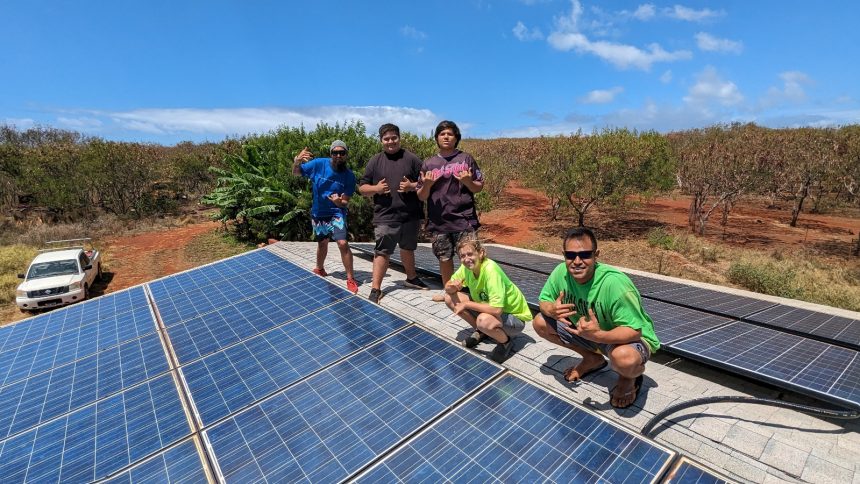On the serene island of Molokaʻi, Kailana Place, like many homesteaders, spent her childhood off-grid on 40 acres of family-owned land specifically designated for Native Hawaiians. Living in repurposed school buses surrounded by fields of red volcanic clay and kiawe trees was a unique experience, which she humorously refers to as a “glamping lifestyle” powered by kerosene and propane. However, a tragic fire three years ago led neighbors to help Place and her husband, Ikaika, build a new house equipped with rooftop solar panels and a battery system.
The shift to reliable solar power has been a game-changer for the Place family, providing constant electricity for essential needs like internet access and storing fish and venison in their freezer. Their son, who suffers from asthma, no longer relies on a generator to power his inhaler, a relief that still feels surreal to the family. This transition reflects a broader trend on Molokaʻi, where residents historically have had to make do with limited electricity due to the high energy costs on the island.
In response to these challenges, the community on Molokaʻi has taken proactive steps to enhance energy security through initiatives like the Molokaʻi Community Energy Resilience Action Plan. This plan, supported by the primary utility in the state, outlines the transition from fossil fuels to renewable energy sources like solar power. The Hoʻāhu Energy Cooperative Molokaʻi, a membership-based organization, is spearheading projects that aim to supply a significant portion of the island’s electricity demand, reducing reliance on expensive imported fuels.
The move towards community-based renewable energy programs is reshaping the energy landscape on Molokaʻi. Through subscription models, individuals and organizations can access solar power without the prohibitive upfront costs, fostering greater sustainability and resilience in the face of climate change impacts. These initiatives are aligned with Hawaii’s ambitious clean energy goals, which seek to eliminate fossil fuel dependency by 2045.
By taking control of their energy future, the residents of Molokaʻi are not only addressing immediate challenges but also reclaiming a sense of autonomy and self-determination. Through collaborative efforts and community-driven planning, Molokaʻi is forging a path towards a more sustainable and equitable energy future, rooted in the values of aloha ʻaina (love for the land) and community well-being.






